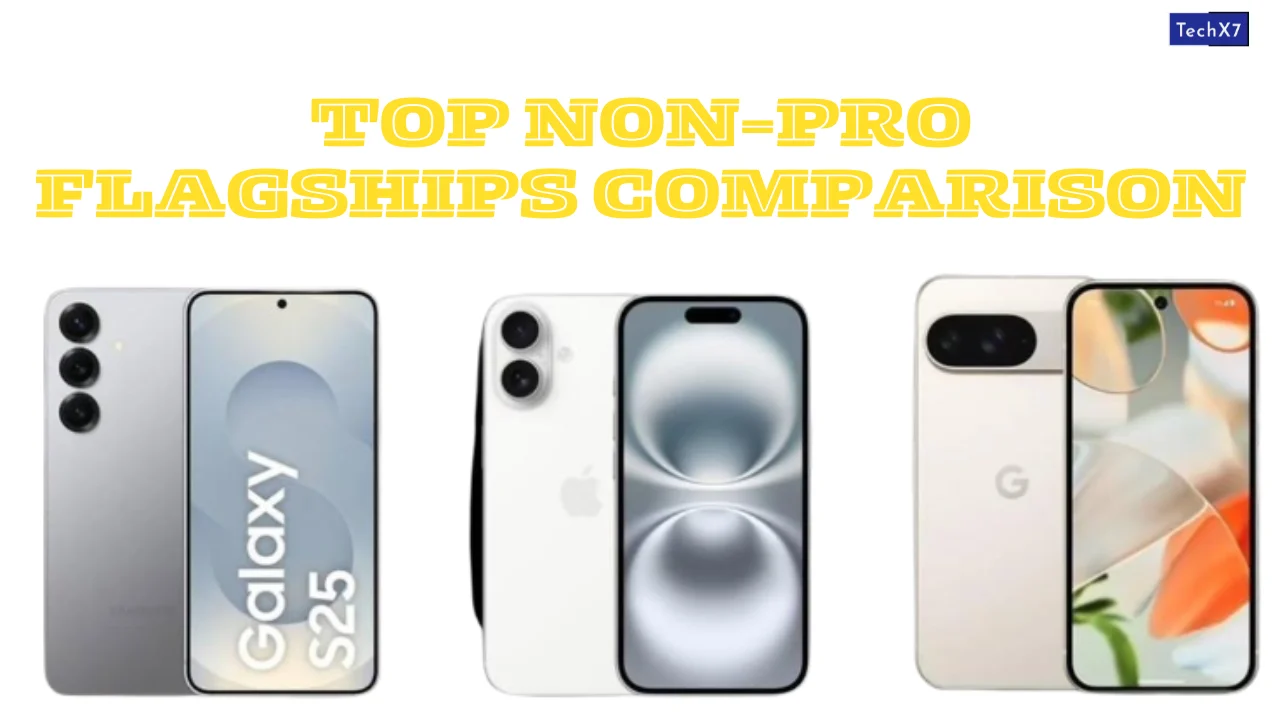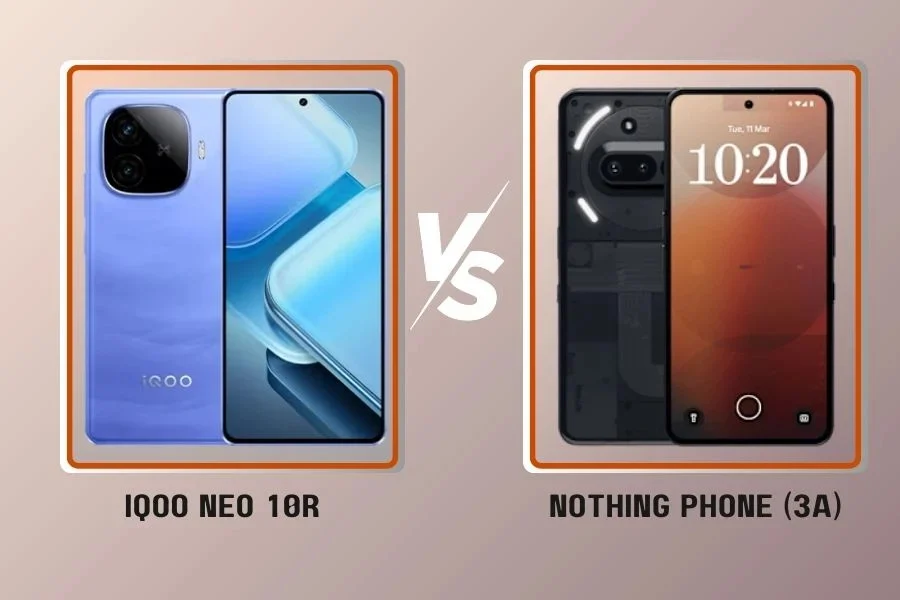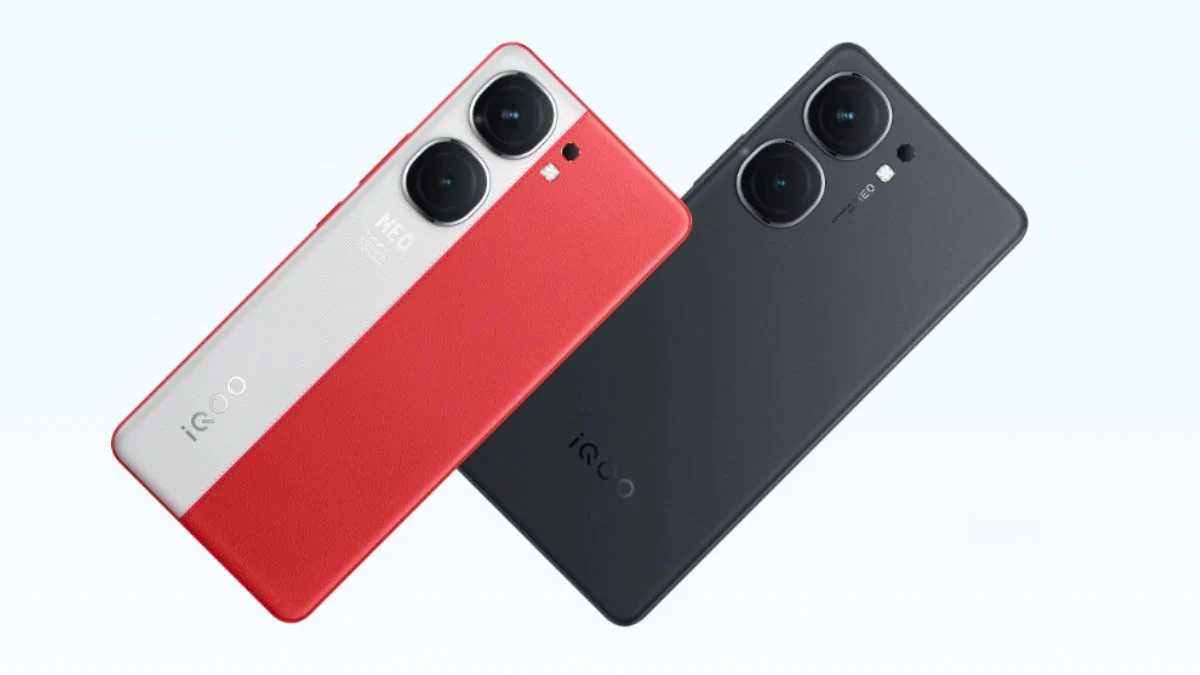Three contenders stand out in the 2025 market for small flagships: the Google Pixel 9, Apple iPhone 16, and Samsung Galaxy S25. These devices are perfect for anyone who want performance without the bulk since they combine premium features into smaller, more portable designs.
Let’s take a look at how these tiny flagships compare in terms of design, performance, AI capabilities, and more.
| Feature | Samsung Galaxy S25 | iPhone 16 | Google Pixel 9 |
| Display | 6.2″ LTPO AMOLED 2X, 120Hz, HDR10+, 2600 nits | 6.1″ Super Retina XDR OLED, Dolby Vision, 2000 nits | 6.3″ OLED, 120Hz, HDR10+, 2700 nits |
| Chipset | Snapdragon 8 Elite | A18 Bionic | Tensor G4 |
| RAM & Storage | 12GB RAM, 256GB (base) | 8GB RAM, 128GB (base) | 12GB RAM, 256GB (base) |
| Cameras | 50MP (wide), 10MP (telephoto), 12MP (ultrawide) | 48MP (wide), 12MP (ultrawide) | 50MP (wide), 48MP (ultrawide) |
| Front Camera | 12MP | 12MP | 10.5MP |
| Battery & Charging | 4000mAh, 25W wired, 15W wireless | 3561mAh, 25W wired, 25W MagSafe | 4700mAh, 27W wired, 15W wireless |
| Colors | Icy Blue, Mint, Navy, Pink Gold, Coral Red | Black, White, Pink, Teal, Ultramarine | Obsidian, Porcelain, Wintergreen, Peony |
| Starting Price | ₹ 80,999 | ₹ 79,900 | ₹ 79,999 |
Design and Build
The Galaxy S25 leads the way in terms of size and mobility, thanks to its small, lightweight design. It is the lightest and most compact of the three, measuring only 7.2mm thick and weighing 162 grams. Its Armor Aluminum 2 frame and Gorilla Glass Victus 2 provide durability to complement its elegant design. It comes in Icy Blue, Mint, Navy, Silver Shadow, Pink Gold, Coral Red, and Blue Black, providing a diverse range of color selections to suit varied preferences.
The iPhone 16 continues Apple’s sophisticated design language, measuring 7.8mm thick and weighing 170 kilos. Its Ceramic Shield glass provides durable protection, and its IP68 designation for 6m water resistance outperforms the competition. The phone is available in black, white, pink, teal, and ultramarine, giving it a clean yet vibrant look.
The Pixel 9 is the largest and heaviest, at 8.5mm thick and 198 grams, but it compensates with a larger display and a robust Gorilla Glass Victus 2 design. It’s available in Obsidian, Porcelain, Wintergreen, and Peony, with a blend of traditional and fun tones.
Display
When it comes to displays, these tiny flagships pack remarkable technology into their panels, but each offers advantages based on how you intend to use your phone.
The Samsung Galaxy S25 has a 6.2-inch LTPO AMOLED 2X display with a refresh rate of 120Hz, resulting in smooth scrolling and animations. What actually jumps out is its max brightness of 2600 nits, making it an excellent choice for outdoor visibility, even in direct sunlight. With HDR10+ compatibility, the Galaxy S25 offers vibrant colors and superb contrast, making it ideal for streaming or gaming.
Apple’s iPhone 16 features a slightly smaller 6.1-inch Super Retina XDR OLED display with excellent images and Dolby Vision capabilities. It offers a good peak brightness of 2000 nits, which is more than adequate for most lighting circumstances, but falls slightly short of the Galaxy S25. However, the iPhone’s display stands out for color accuracy and HDR content, offering it an advantage for individuals who watch a lot of high-quality video.
The Google Pixel 9 has the biggest screen in this class, with a 6.3-inch OLED display. It equals Samsung’s 120Hz refresh rate, assuring smooth interactions, but goes one step further in brightness, with a peak brightness of 2700 nits, the highest of the three. This makes it perfect for outdoor usage, since it maintains clarity even under bright sunlight. The Pixel’s display is somewhat higher and narrower, which may be beneficial for multitasking or reading lengthy material.
Performance
When it comes to sheer performance, the Galaxy S25 and iPhone 16 stand out. The Galaxy S25, with its Snapdragon 8 Elite CPU and 12GB of RAM, excels at gaming and multitasking. Whether you’re running heavy programs or playing a graphically demanding game, the S25 can keep up without breaking a sweat.
Apple’s iPhone 16 is similarly competent, due to the A18 processor. Even with only 8GB of RAM, Apple’s software optimization delivers buttery-smooth performance. It’s ideal for gamers and multitaskers who want dependable power in a small size.
The Pixel 9, powered by the Tensor G4 processor, is more focused on AI and photography than gaming. While Tensor chips aren’t bad for everyday usage, they’ve typically been slower than the Snapdragon 8 Elite and Apple’s A-series processors in terms of gaming performance.
If you’re a hardcore user who enjoys gaming or need a phone with demanding multitasking capabilities, the Galaxy S25 and iPhone 16 are significantly superior options. The Pixel 9 is still a fantastic phone, but it’s evident that Samsung and Apple have the advantage for customers who want the finest performance possible.
Cameras
The Galaxy S25 sets a high standard with its 50MP triple-camera system, which combines a wide lens, an ultrawide lens, and a telephoto lens with 3x optical zoom. This configuration allows you to capture precise close-ups, panoramic landscapes, and zoom in on distant things. With 8K video capture, it’s also a powerful tool for videographers, providing fine clarity and professional-grade footage. Features like Super Steady Video and Best Face make it simple to capture outstanding images even in adverse settings.
Apple’s iPhone 16 keeps things simple with a 48MP dual-camera configuration that includes a wide and ultrawide lens. While it lacks a telephoto lens, Apple compensates with superior picture processing and features like Dolby Vision HDR for excellent video quality. The iPhone 16 is suitable for consumers who seek exceptional results without having to mess with different settings.
The Pixel 9 takes a unique approach with its 50MP primary sensor and 48MP ultrawide lens. Its outstanding feature, Magic Editor, allows you to fully rethink your photographs with AI accuracy, whether you want to change the item location or the colors. It’s an excellent choice for individuals who enjoy fine-tuning their photographs and experimenting with editing software.
If photography is your first priority, the Galaxy S25 provides the greatest flexibility with its telescopic lens and high-resolution video recording. The iPhone 16 produces great results with ease, whilst the Pixel 9 is ideal for people who like the creative flexibility of AI-enhanced editing. Each phone shines in its own way, based on what you want from your camera.
AI Features
All three phones employ artificial intelligence to improve user experiences, but Samsung’s Galaxy S25 outperforms in terms of usefulness and accessibility.
Samsung’s Galaxy AI includes functions such as Writing Assist, which can summarize, reformat, and modify text in any app–a functionality lacking from the Pixel and iPhone. It also offers Live Call Transcription, which operates internationally, but Pixel’s transcription service is not available in India.
Apple’s Intelligence AI includes important features such as Notification Summaries and the revamped Siri, however both are presently experiencing deployment problems. Samsung’s AI features appear to be more full and dependable at this point.
Google’s Gemini Nano AI excels at photo editing but lacks the depth of functionality provided by Samsung.
Battery and Charging
The Galaxy S25 has a 4000mAh battery, 25W wired charging, and 15W wireless charging, resulting in consistent, dependable performance.
The iPhone 16, with its 3561mAh battery, is smaller yet uses the efficiency of its A18 processor to retain a reasonable battery life. Its 25W wireless charging improves convenience.
The Pixel 9 stands out for its 4700mAh battery, 27W wired charging, and 15W wireless support, giving it the ideal choice for extended use.
Pricing
Here’s how the pricing stacks up:
- Samsung Galaxy S25 starts at Rs 80,999 for the 12GB RAM and 256GB storage variant.
- Apple iPhone 16 starts at Rs 79,900, but you’re getting 8GB of RAM and 128GB of storage at this price.
- Google Pixel 9 is priced at Rs 79,999 for the 12GB RAM and 256GB storage model.
It is important to remember that these are the beginning pricing and do not include any discounts or special deals. While the iPhone 16 has the lowest starting price, it also has the least storage and RAM, whereas the Galaxy S25 and Pixel 9 provide more for a somewhat higher price. If there are agreements on the table, your decision may change based on what is offered.
Final Verdict: Which Compact Flagship Wins?
If you’re looking for a well-rounded small flagship, the Samsung Galaxy S25 stands out. Its small form, powerful AI capabilities, and amazing display make it difficult to surpass.
The Apple iPhone 16 is ideal for people who are highly invested in Apple’s ecosystem, albeit its AI functions are currently lagging.
For photography experts and fans of Google’s software, the Pixel 9 has excellent picture editing features and a bigger battery, but overall performance feels worse.
Finally, each tiny flagship has its own set of qualities, so your decision will be based on whether design, performance, or AI are more important to you.




